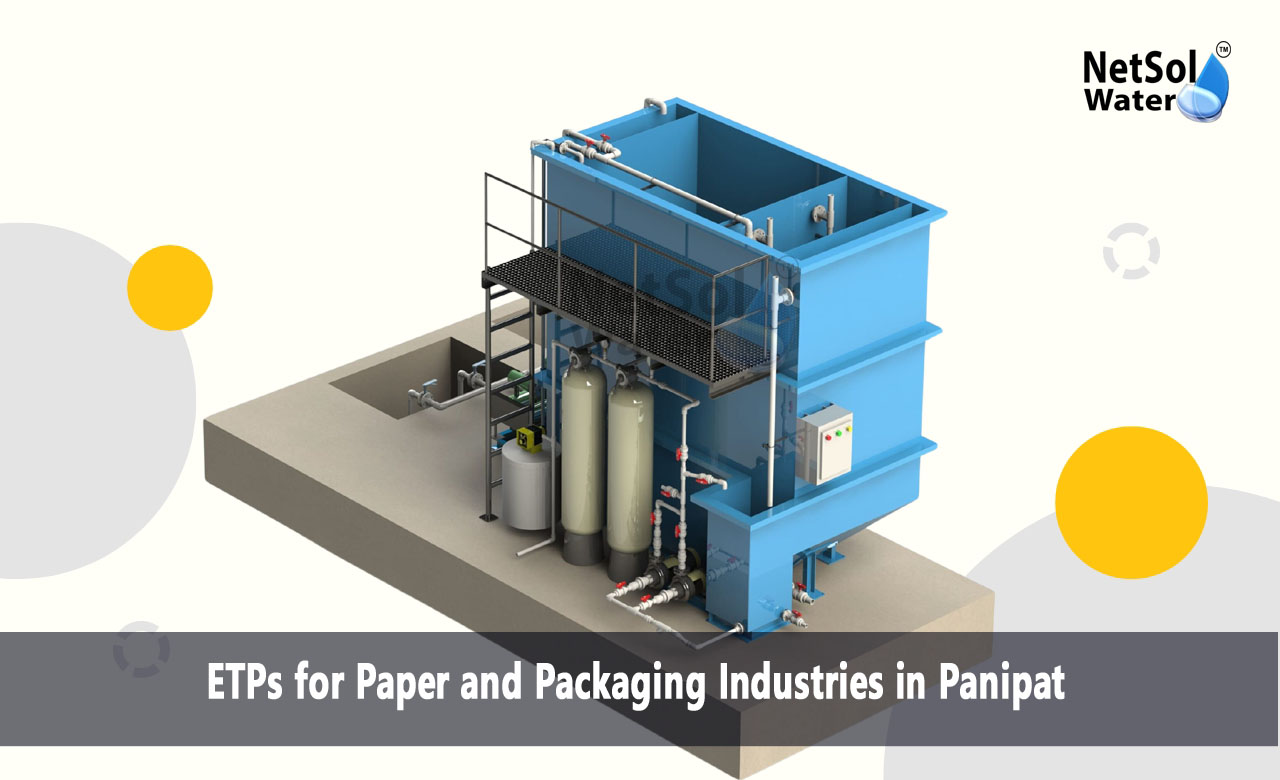ETPs for Paper & Packaging Industries in Panipat
Panipat serves as a major centre for the paper and packaging sector in India. The city houses many factories that turn raw pulp into sheets and boxes. These units use large volumes of water at each production step. The rinse water carries fibers, ink and chemicals that can harm local water bodies if released untreated. Companies in Panipat now seek reliable partners to treat their industrial wastewater. Netsol Water stands as the leading Effluent Treatment Plant Manufacturer in Panipat and offers solutions that meet strict discharge standards.
Importance of Effluent Treatment Plants for Paper & Packaging Sector
A clean water flow shapes both factory health and local ecology. Paper and packaging units need water to wash pulp to form sheets and to rinse printed rolls. Waste water from these steps holds suspended solids dyes and pH variations. Factories must remove these elements before they send water back to rivers or sewers. Let us have a look on some key points.
Process Water Quality
Proper treatment removes fibers and dyes from wash water. It keeps the water clear and safe for reuse. Clean water helps the factory use less fresh water in the next batch.
Environmental Compliance
Factories must meet rules on discharge quality. A good plant ensures treated water meets the allowed limits for solids pH and colour. This step keeps the unit in line with state and national laws.
Resource Saving
By treating and reusing water the unit cuts down on fresh water intake. This step lowers water bills and eases pressure on local sources. It also reduces the volume of waste sludge.
Key Components of an ETP by Netsol Water
Every plant needs parts that work in sync to clean waste water. Netsol Water builds each plant with care to fit the demands of paper and packaging waste. Let us have a look on some components.
Screening Unit
This section holds large debris from the water flow. It stops rags and big particles from entering the next units. It protects pumps and valves from blockages.
Equalization Tank
This tank evens out changes in flow and load. It blends the water to a steady mix. A steady feed helps each stage work at its best.
Primary Clarifier
This tank slows the flow and lets solids settle at the bottom. The clear water on top moves to the next stage. The settled sludge drops into a hopper for further handling.
Secondary Treatment
Here bacteria break down organic matter in the water. The process converts harmful substances into safe byproducts. Netsol Water tunes the system to match waste from paper pulp and inks.
Sludge Handling
The settled solids from each stage need safe disposal or reuse. Netsol Water offers options to dewater this sludge. Clients can then use the dry cake as fuel or send it to a landfill.
Design Considerations for Paper & Packaging Wastewater
A factory’s waste water may carry fibers, inks and chemicals in varied amounts. Designers need to plan the plant to match these traits. Let us have a look on some design aspects.
Flow Fluctuation
Paper lines may run at different rates through the day. The plant must handle low flows at night and peaks in the day. A buffer tank helps it cope with these swings.
pH Control
The rinse water may change in acidity or alkalinity. The design needs a dosing unit to adjust pH to a safe range. This control protects bacteria in the secondary stage.
Retention Time
Each unit needs enough time to work on the water. The design must size tanks so that solids settle and bacteria do their job. Netsol Water sets each stage time to meet the site flow.
Footprint and Space
Factories may have limited space for new units. The layout must fit within the site. Netsol Water creates compact plants that save floor area.
Operation and Maintenance Practices for ETP
A plant runs well when staff check and clean its parts on time. Good care means longer life and steady performance. Let us have a look on some best practices.
Routine Inspection
Operators must walk the plant each shift. They look at pumps valves and tank levels. Early detection of issues stops small faults from growing.
Media Cleaning
Filters and media beds trap solids over time. Periodic cleaning or backwash restores their capacity. This step keeps the flow steady.
Monitoring and Testing
Regular tests for pH solids and biological activity guide the team. They adjust feed rates and chemical doses based on test results. This habit ensures the plant meets discharge limits.
Record Keeping
A log of daily readings and work done builds a history. It shows trends in water quality and plant health. Teams use it to plan service and parts replacement.
Conclusion
An efficient wastewater plant shapes a cleaner site and a healthier environment. It also saves the paper and packaging unit on water and power bills. Netsol Water as an Effluent Treatment Plant Manufacturer in Panipat stands ready to plan deliver and maintain your system. Reach out today for a free consultation or to learn more about the solutions available for your factory.
Contact Netsol Water at:
Phone: +91-9650608473, Email: enquiry@netsolwater.com



